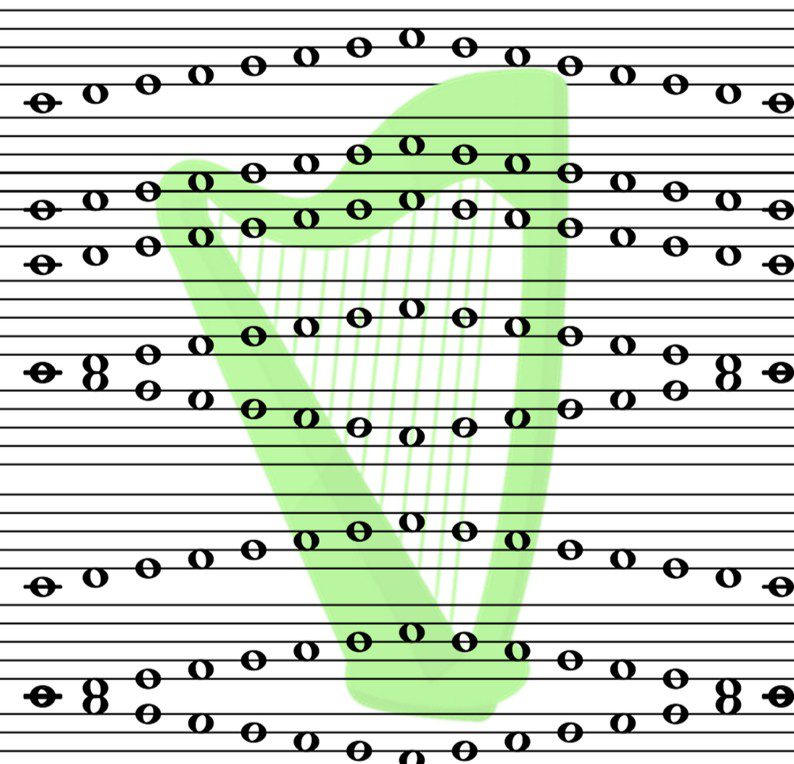In the tech and pseudo-tech worlds things work at scale and to scale, and scaling up is very important. For us, working at scales is not just important – it’s essential!
When you think about it – scales make up all music. They represent the available notes, define all the intervals, and by picking and choosing they also sketch out every possible shape.

Given the power scales hold, why do some people roll their eyes at their mere mention? And why do still others avoid them like the proverbial plague? Is it because they are tedious? Or is it like flossing – something we have all been told will both improve and prolong our lives and yet, less than 30% of us do it!
Doing scales should be a part of your daily harp hygiene. But we might need a subtle mindset shift to make the whole thing more palatable. Here are a few ideas you might try if you find you’re not doing scales daily – one for each day of the week!
1. Beginner’s Mindset – If you are a beginner, or if you remember your very early playing, scales are not easy. There is so much to do – placing your fingers, checking that they are one the right strings, playing carefully, closing all the way, learning what a scale sounds like (correct and incorrect), making adjustments, pretending you can go faster (than you really can), and more. It’s all hard. But eventually, with practice, it gets easier. And soon, you either rip through them or forget to do them all together. I challenge you to – at least once a week – put your beginner’s hat on and do your scales slowly (ponderously?) as you did when you learned to do them. They aren’t as eyerollingly droll as you might think when you pay attention.
2. Meditation at scales – If you’re not a beginner, your scales are probably on autopilot. So, I challenge you to do them once a week as an opportunity to breathe and check in with yourself. Transcend the details to observe the totality of your scale. You’ll learn a lot which you can plow back into your playing!
3. Scales can be challenging – There are so many ways to break out of boring, rote scales. One of my favorites is “Russian Scales” which I totally stole from piano. These are simple scales that move from parallel motion to contrary motion throughout the exercise. Easy-peasy (ha!). From Russian Scales we go to “Chasing Squirrels” which is much more free form but still shifting between parallel and contrary. You can make your own patterns – maybe have fun by shifting keys (to change up the visual cues).
4. Threes – I learned this from someone (maybe Maeve Gilchrist?) one hand plays a 2-octave scale in 3s, while the other plays a straight 1- octave scale. You’re done when both hands end up where you started.
5. Consistently Contrary – Do your scales always in opposition (contrary motion). No funky rhythms or change ups, just be contrary.
6. Push your weight around – Use a dotted rhythm to give your scales a little swing. Use different rhythms, try polyrhythms, challenge yourself!
7. Book scales – Get out your fav – Grossi, Friou, Hannon (I know – piano, but still useful) and do it! I also really like the books from Maeve Gilchrist, Gillian Fleetwood, and Sue Richards. There are loads of these technique exercise books – use them!
So, there you have a week’s work of scales – with no boredom, constant challenge. And none takes more than their fair share of practice time. No excuses. What are your favorite scales? Let me know in the comments! Want video examples? Send me a note and I’ll get it to you!